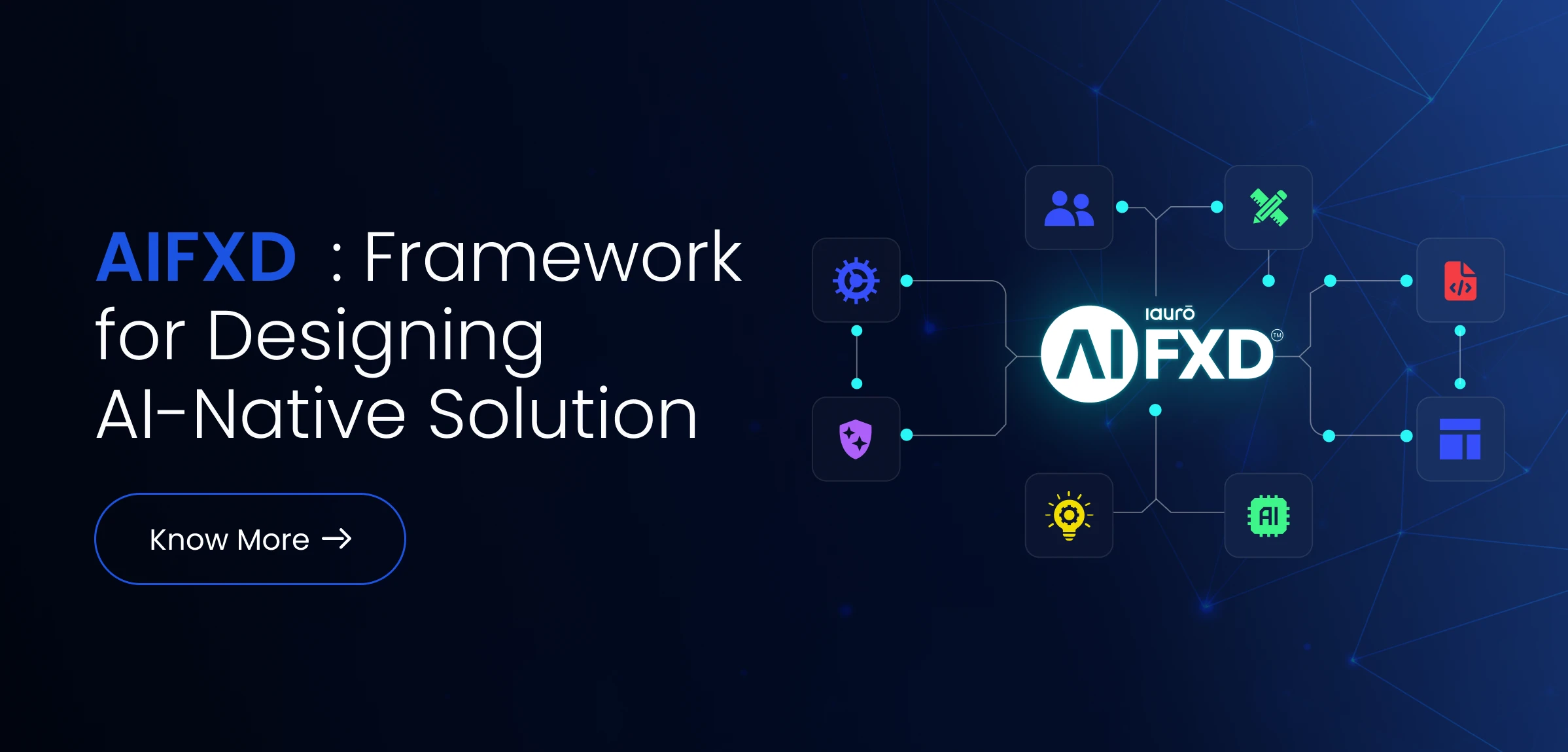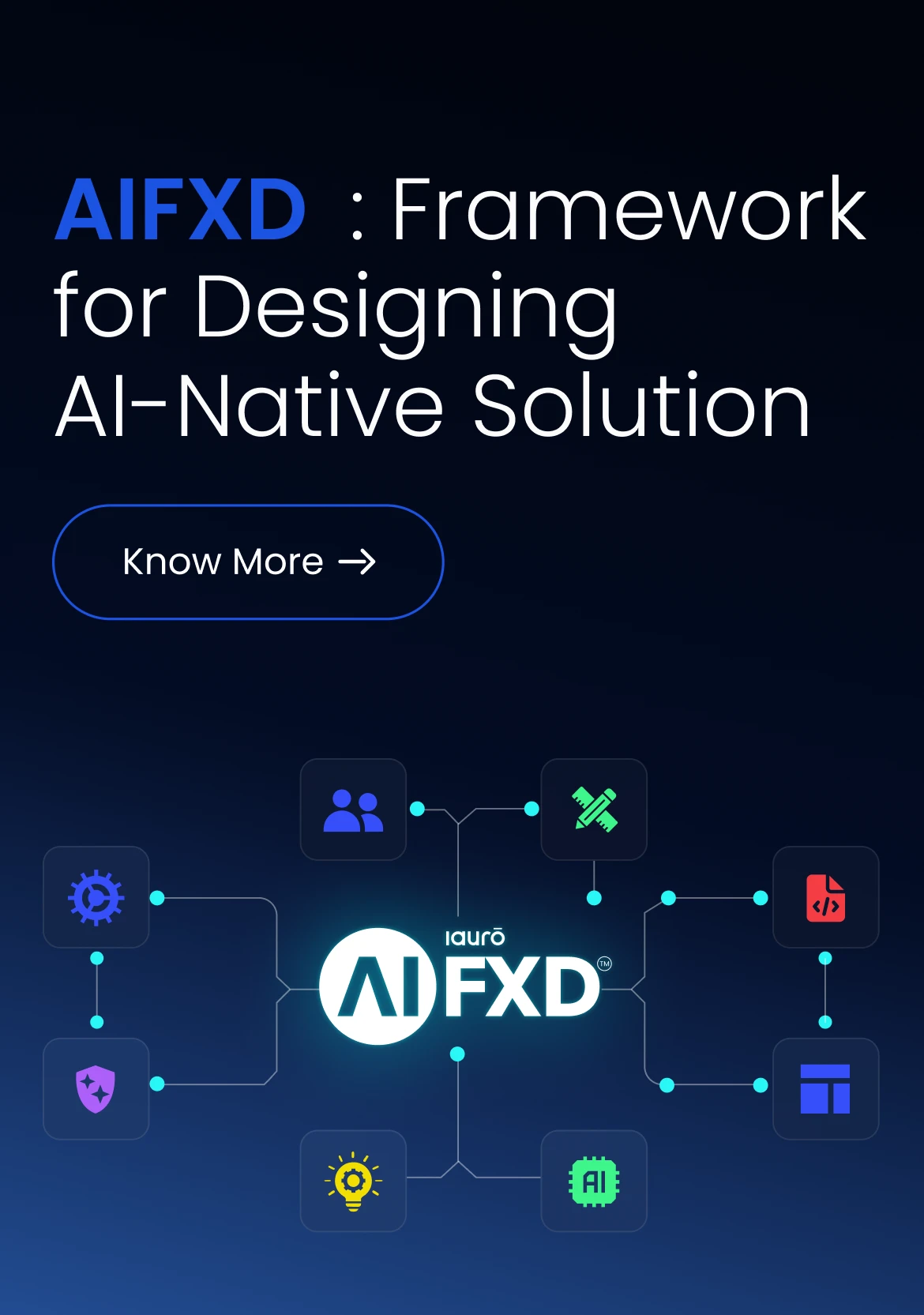Nextgen Banking in the era of AI: Perspective on workforce, operations, and business success.
Imagine a world where your bank understands your financial needs even before you do, where fraud is detected and prevented in real-time, and where tedious banking operations are streamlined to near perfection. This isn’t a glimpse into a distant future—this is the reality that artificial intelligence (AI) is bringing to the banking sector today. As we stand on the brink of this technological revolution, banks are not just adopting AI; they are transforming into AI-driven institutions that redefine success, efficiency, and customer satisfaction
The integration of AI into banking is not merely an upgrade; it is a paradigm shift. From revolutionizing workforce management and operational efficiencies to driving unparalleled business success, AI is reshaping every facet of the banking industry. But what does this transformation mean for the banks of today? How can financial institutions harness the power of AI to build a resilient, innovative, and customer-centric future?
In this Point of View (PoV), we delve into the profound impacts of AI on the workforce, operational efficiencies, and overall business success in the banking industry. By exploring real-world examples and industry insights, we aim to provide a comprehensive understanding of how AI is not just enhancing banking operations but fundamentally reinventing them. Join us as we uncover the next generation of banking in the era of AI—a journey that promises to challenge your perspectives and inspire new possibilities.
The AI-Driven Workforce Transformation
The workforce in banking is undergoing a significant transformation, driven by AI and machine learning (ML). These technologies are not merely augmenting the capabilities of human employees but are fundamentally changing the nature of work itself. According to a report by Workday, AI and ML are instrumental in creating the next-gen workforce, enabling banks to build teams that are more agile, efficient, and innovative.
AI is enhancing the recruitment process by using predictive analytics to identify the best candidates, ensuring a better fit and higher retention rate. It evaluates not just the technical skills but also the cultural fit and potential for growth within the organization. Moreover, AI-driven tools help in onboarding by providing new employees with personalized training programs that match their learning pace and style.
JPMorgan Chase’s Contract Intelligence (COiN) platform is a prime example of AI transforming workforce operations. COiN uses ML algorithms to analyze legal documents and extract important data points. This automation has drastically reduced the time required for legal document review, freeing up human employees to focus on more complex, value-added tasks.
AI’s role in workforce management extends beyond automation. It includes predictive analytics for talent acquisition, employee retention strategies, and personalized career development plans. Banks leveraging AI for these purposes can ensure they attract and retain top talent, thereby gaining a competitive advantage in the marketplace.
AI also plays a crucial role in enhancing employee productivity and satisfaction. By automating repetitive and mundane tasks, AI allows employees to focus on more strategic and fulfilling work. Additionally, AI-powered tools can provide employees with real-time feedback and recommendations, helping them improve their performance and career growth.
Enhancing
Operational Efficiencies
Operational efficiency is a cornerstone of banking success, and AI plays a pivotal role in enhancing these efficiencies. By leveraging AI, banks can streamline their processes, reduce operational costs, and improve service delivery.
HSBC has implemented AI-driven systems to enhance its fraud detection capabilities. These systems analyze vast amounts of transaction data in real-time, identifying suspicious activities that might go unnoticed by human analysts. The result is a significant reduction in fraudulent transactions and enhanced security for customers.
AI also optimizes back-office operations, from loan processing to customer service. Robotic Process Automation (RPA) combined with AI can handle repetitive tasks with higher accuracy and speed than human workers, allowing banks to allocate resources more effectively and focus on strategic initiatives


In the realm of customer service, AI-powered chatbots and virtual assistants are revolutionizing how banks interact with customers. These tools can handle a wide range of customer inquiries, from simple account queries to more complex financial advice, providing instant and accurate responses. This not only improves customer satisfaction but also reduces the workload on human customer service representatives.
Bank of America’s AI-driven virtual assistant, Erica, is a testament to how AI can enhance customer service. Erica helps customers with various tasks, including checking balances, making payments, and providing financial advice. Since its launch, Erica has handled millions of customer interactions, demonstrating the efficiency and scalability of AI in customer service.
AI is also crucial in compliance and risk management. By analyzing large datasets, AI can identify patterns and anomalies that indicate potential compliance issues or financial risks. This proactive approach helps banks mitigate risks and avoid regulatory penalties.
AI's Impact on Business Success
AI is not just about improving internal processes; it is a strategic enabler of business success. The ability to harness data through AI and ML allows banks to offer personalized services, predict customer needs, and create new revenue streams.
Example: BBVA’s Personalized Financial Advice
BBVA uses AI to provide personalized financial advice to its customers. The bank’s AI system analyzes customer data, including spending habits and financial goals, to offer tailored recommendations. This personalized approach not only enhances customer satisfaction but also drives customer loyalty and retention.
AI-driven insights enable banks to develop innovative products and services. By analyzing market trends and customer behaviors, banks can identify new opportunities for growth and stay ahead of the competition. Furthermore, AI supports risk management by providing predictive analytics that can forecast potential financial threats and enable proactive decision-making
AI also plays a significant role in enhancing marketing strategies. By analyzing customer data, AI can segment customers more accurately and create personalized marketing campaigns that resonate with individual preferences and behaviours. This targeted approach increases the effectiveness of marketing efforts and improves the return on investment.
Capital One leverages AI to enhance its marketing strategies. By using AI to analyze customer data, the bank can create highly targeted marketing campaigns that increase customer engagement and conversion rates. This approach has helped Capital One maintain a competitive edge in a crowded market.
AI’s ability to process and analyze large volumes of data also opens up new revenue streams through data monetization. Banks can offer insights and analytics services to other businesses, providing them with valuable data-driven insights to inform their strategies and operations.
Challenges and Considerations
While the benefits of AI in banking are substantial, there are also significant challenges that need to be addressed. Data privacy and security are paramount concerns. Banks must ensure that their AI systems comply with regulatory standards and protect sensitive customer information.
The ethical implications of AI also need careful consideration. As AI systems make more decisions, banks must ensure these decisions are transparent and fair. Bias in AI algorithms can lead to discriminatory practices, which can harm both customers and the bank’s reputation. Therefore, developing robust frameworks for AI ethics and governance is essential.
Moreover, the integration of AI requires a substantial investment in technology and talent. Banks must be prepared to invest in the necessary infrastructure and upskill their workforce to work effectively alongside AI systems. This involves not only technical training but also fostering a culture of innovation and adaptability.
The rapid pace of technological change poses another challenge. Banks must continuously update and adapt their AI systems to keep pace with evolving technologies and market demands. This requires a flexible and forward-thinking approach to technology management.
The era of AI in banking heralds unprecedented opportunities for transforming workforce dynamics, enhancing operational efficiencies, and achieving business success. As AI continues to evolve, banks that strategically embrace these technologies will be well-positioned to thrive in an increasingly competitive and digital landscape. The future of banking is here, and it is intelligent, efficient, and customer-centric.

By adopting AI, banks can not only streamline their operations and improve service delivery but also create a more agile, innovative, and customer-focused business model. The journey towards AI integration may be challenging, but the rewards are immense for those willing to lead the charge into the next generation of banking.
The transformative power of AI is already evident in numerous aspects of banking. From workforce management and operational efficiency to customer service and business strategy, AI is driving significant improvements and innovations. Banks that embrace AI not only enhance their current operations but also position themselves for sustained success in the future.
In conclusion, the integration of AI into banking is not a question of if but when. As the industry continues to evolve, banks that leverage AI will lead the way in providing superior customer experiences, operational efficiencies, and innovative solutions. The next generation of banking is upon us, and AI is at the heart of this transformation. Embrace the change, harness the power of AI, and prepare to thrive in the era of next-gen banking.
Taking one liner ideas to make impactful business outcomes.
Nextgen Banking in the era of AI: Perspective on workforce, operations, and business success.

Imagine a world where your bank understands your financial needs even before you do, where fraud is detected and prevented in real-time, and where tedious banking operations are streamlined to near perfection. This isn’t a glimpse into a distant future—this is the reality that artificial intelligence (AI) is bringing to the banking sector today. As we stand on the brink of this technological revolution, banks are not just adopting AI; they are transforming into AI-driven institutions that redefine success, efficiency, and customer satisfaction.
The integration of AI into banking is not merely an upgrade; it is a paradigm shift. From revolutionizing workforce management and operational efficiencies to driving unparalleled business success, AI is reshaping every facet of the banking industry. But what does this transformation mean for the banks of today? How can financial institutions harness the power of AI to build a resilient, innovative, and customer-centric future?
In this Point of View (PoV), we delve into the profound impacts of AI on the workforce, operational efficiencies, and overall business success in the banking industry. By exploring real-world examples and industry insights, we aim to provide a comprehensive understanding of how AI is not just enhancing banking operations but fundamentally reinventing them. Join us as we uncover the next generation of banking in the era of AI—a journey that promises to challenge your perspectives and inspire new possibilities.
The AI-Driven Workforce Transformation
The workforce in banking is undergoing a significant transformation, driven by AI and machine learning (ML). These technologies are not merely augmenting the capabilities of human employees but are fundamentally changing the nature of work itself. According to a report by Workday, AI and ML are instrumental in creating the next-gen workforce, enabling banks to build teams that are more agile, efficient, and innovative.
AI is enhancing the recruitment process by using predictive analytics to identify the best candidates, ensuring a better fit and higher retention rate. It evaluates not just the technical skills but also the cultural fit and potential for growth within the organization. Moreover, AI-driven tools help in onboarding by providing new employees with personalized training programs that match their learning pace and style.
JPMorgan Chase’s Contract Intelligence (COiN) platform is a prime example of AI transforming workforce operations. COiN uses ML algorithms to analyze legal documents and extract important data points. This automation has drastically reduced the time required for legal document review, freeing up human employees to focus on more complex, value-added tasks.
AI’s role in workforce management extends beyond automation. It includes predictive analytics for talent acquisition, employee retention strategies, and personalized career development plans. Banks leveraging AI for these purposes can ensure they attract and retain top talent, thereby gaining a competitive advantage in the marketplace.
AI also plays a crucial role in enhancing employee productivity and satisfaction. By automating repetitive and mundane tasks, AI allows employees to focus on more strategic and fulfilling work. Additionally, AI-powered tools can provide employees with real-time feedback and recommendations, helping them improve their performance and career growth.
Enhancing
Operational Efficiencies
Operational Efficiencies
Operational efficiency is a cornerstone of banking success, and AI plays a pivotal role in enhancing these efficiencies. By leveraging AI, banks can streamline their processes, reduce operational costs, and improve service delivery.
HSBC has implemented AI-driven systems to enhance its fraud detection capabilities. These systems analyze vast amounts of transaction data in real-time, identifying suspicious activities that might go unnoticed by human analysts. The result is a significant reduction in fraudulent transactions and enhanced security for customers.
AI also optimizes back-office operations, from loan processing to customer service. Robotic Process Automation (RPA) combined with AI can handle repetitive tasks with higher accuracy and speed than human workers, allowing banks to allocate resources more effectively and focus on strategic initiatives.

In the realm of customer service, AI-powered chatbots and virtual assistants are revolutionizing how banks interact with customers. These tools can handle a wide range of customer inquiries, from simple account queries to more complex financial advice, providing instant and accurate responses. This not only improves customer satisfaction but also reduces the workload on human customer service representatives.
Bank of America’s AI-driven virtual assistant, Erica, is a testament to how AI can enhance customer service. Erica helps customers with various tasks, including checking balances, making payments, and providing financial advice. Since its launch, Erica has handled millions of customer interactions, demonstrating the efficiency and scalability of AI in customer service
AI is also crucial in compliance and risk management. By analyzing large datasets, AI can identify patterns and anomalies that indicate potential compliance issues or financial risks. This proactive approach helps banks mitigate risks and avoid regulatory penalties.

AI’s Impact on Business Success
AI is not just about improving internal processes; it is a strategic enabler of business success. The ability to harness data through AI and ML allows banks to offer personalized services, predict customer needs, and create new revenue streams
Example: BBVA’s Personalized Financial Advice
BBVA uses AI to provide personalized financial advice to its customers. The bank’s AI system analyzes customer data, including spending habits and financial goals, to offer tailored recommendations. This personalized approach not only enhances customer satisfaction but also drives customer loyalty and retention.
AI-driven insights enable banks to develop innovative products and services. By analyzing market trends and customer behaviors, banks can identify new opportunities for growth and stay ahead of the competition. Furthermore, AI supports risk management by providing predictive analytics that can forecast potential financial threats and enable proactive decision-making.
AI also plays a significant role in enhancing marketing strategies. By analyzing customer data, AI can segment customers more accurately and create personalized marketing campaigns that resonate with individual preferences and behaviours. This targeted approach increases the effectiveness of marketing efforts and improves the return on investment.
Capital One leverages AI to enhance its marketing strategies. By using AI to analyze customer data, the bank can create highly targeted marketing campaigns that increase customer engagement and conversion rates. This approach has helped Capital One maintain a competitive edge in a crowded market.
AI’s ability to process and analyze large volumes of data also opens up new revenue streams through data monetization. Banks can offer insights and analytics services to other businesses, providing them with valuable data-driven insights to inform their strategies and operations.
Challenges and Considerations
While the benefits of AI in banking are substantial, there are also significant challenges that need to be addressed. Data privacy and security are paramount concerns. Banks must ensure that their AI systems comply with regulatory standards and protect sensitive customer information.
The ethical implications of AI also need careful consideration. As AI systems make more decisions, banks must ensure these decisions are transparent and fair. Bias in AI algorithms can lead to discriminatory practices, which can harm both customers and the bank’s reputation. Therefore, developing robust frameworks for AI ethics and governance is essential.
Moreover, the integration of AI requires a substantial investment in technology and talent. Banks must be prepared to invest in the necessary infrastructure and upskill their workforce to work effectively alongside AI systems. This involves not only technical training but also fostering a culture of innovation and adaptability
The rapid pace of technological change poses another challenge. Banks must continuously update and adapt their AI systems to keep pace with evolving technologies and market demands. This requires a flexible and forward-thinking approach to technology management.
The era of AI in banking heralds unprecedented opportunities for transforming workforce dynamics, enhancing operational efficiencies, and achieving business success. As AI continues to evolve, banks that strategically embrace these technologies will be well-positioned to thrive in an increasingly competitive and digital landscape. The future of banking is here, and it is intelligent, efficient, and customer-centric.

By adopting AI, banks can not only streamline their operations and improve service delivery but also create a more agile, innovative, and customer-focused business model. The journey towards AI integration may be challenging, but the rewards are immense for those willing to lead the charge into the next generation of banking.
The transformative power of AI is already evident in numerous aspects of banking. From workforce management and operational efficiency to customer service and business strategy, AI is driving significant improvements and innovations. Banks that embrace AI not only enhance their current operations but also position themselves for sustained success in the future.
In conclusion, the integration of AI into banking is not a question of if but when. As the industry continues to evolve, banks that leverage AI will lead the way in providing superior customer experiences, operational efficiencies, and innovative solutions. The next generation of banking is upon us, and AI is at the heart of this transformation. Embrace the change, harness the power of AI, and prepare to thrive in the era of next-gen banking.
Taking one liner ideas to make impactful business outcomes.

